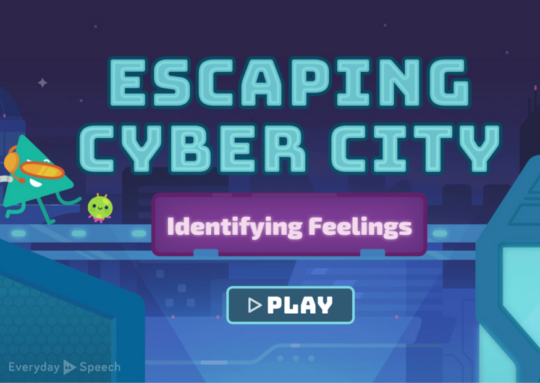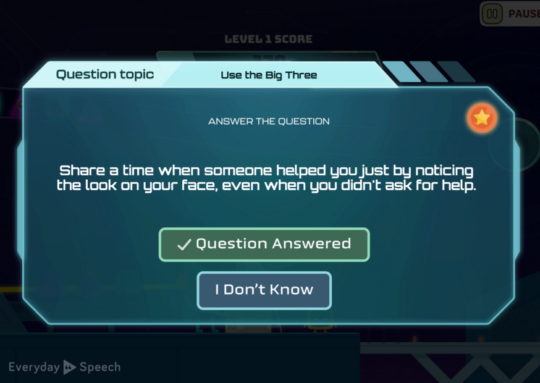
Introduction
Teaching high school students to understand and manage their emotions is a critical aspect of their education. This skill is fundamental to their social development, mental health, and overall well-being. In this blog post, we’ll explore the importance of teaching emotional recognition in high school and provide a detailed lesson plan featuring the interactive video game “Escaping Cyber City: Identifying Feelings” to engage students in this essential learning process.
The Importance of Teaching High School Students to Understand and Manage Emotions
Recognizing and understanding emotions are foundational social skills. Students who can identify their own feelings and those of others are better prepared to navigate social interactions, form connections, and collaborate effectively. Adolescence is a pivotal period marked by rapid physical, emotional, and cognitive changes. For high school students, understanding and managing emotions can be particularly challenging. Here are several reasons why teaching emotional recognition and management is crucial at this stage:
Improves Academic Performance: Emotional awareness can directly impact a student’s ability to focus, manage stress, and stay motivated. By addressing emotional recognition, educators can help students create a more conducive learning environment, leading to improved academic outcomes.
Supports Mental Health: Adolescence is a time when mental health issues often emerge. Teaching students to identify and articulate their emotions can help them better understand and manage their mental health, reducing the risk of anxiety, depression, and other emotional challenges.
Promotes Self-Regulation: Understanding emotions is the first step towards self-regulation. Students who can identify their feelings are better equipped to use coping strategies, make informed decisions, and respond to situations in a balanced manner.
Fosters Empathy and Compassion: Emotional recognition is the foundation of empathy. When students understand their own emotions, they are more likely to recognize and respond to the feelings of others, fostering a more inclusive and compassionate school environment.
Lesson Plan: Understanding and Managing Emotions
Objective
Students will demonstrate their ability to understand and manage emotions through interactive gameplay, discussions, and reflective activities.
Materials Needed
- Computers or tablets with internet access
- Emotion Identification Worksheets
- Escaping Cyber City: Identifying Feelings Game
- Journals or notebooks for reflection
- Projector and screen (optional, for group discussion)
Introduction (10 min)
Begin with a brief discussion on emotions. Ask students to name different emotions and describe situations where they might feel these emotions.
- Happiness: Students might feel happy when they receive a compliment, spend time with friends, or achieve a goal they’ve been working towards.
- Sadness: Students might feel sad when they experience a loss, such as the end of a friendship, the passing of a loved one, or a disappointing outcome in a personal endeavor.
- Anger: Students might feel angry when they perceive an injustice, are provoked by someone else’s actions or words, or feel frustrated by a difficult situation.
Explain the importance of identifying and understanding feelings, linking it to real-life scenarios they might encounter in school or at home. For example:
- Conflict Resolution: Understanding emotions can help students navigate conflicts effectively. For instance, if a student can identify when they feel angry and why, they can communicate their feelings more clearly during a disagreement with a classmate or sibling, leading to a more constructive resolution.
- Academic Performance: Recognizing feelings of stress or anxiety related to schoolwork can prompt students to seek support from teachers or develop healthy coping strategies, ultimately improving their academic performance and overall well-being.
- Healthy Relationships: Identifying emotions such as jealousy, insecurity, or joy in the context of friendships and family relationships can help students cultivate healthier, more supportive connections. For example, recognizing feelings of jealousy towards a friend’s success can prompt self-reflection and communication about those emotions, fostering a stronger bond.
Pre-Game Activity (10 min)
- Distribute the emotion identification worksheets. You can find 1000 worksheets on Everyday Speech, or you can try some free samples here.
- Have students match the pictures with the correct emotions and discuss their answers with a partner.
- Review the answers as a class and discuss any discrepancies to ensure understanding.
Play Escaping Cyber City: Identifying Feelings Game (15 minutes)
- Introduce “Escaping Cyber City: Identifying Feelings” and explain the game’s objectives and controls.
- Allow students to play the game individually or in small groups. Encourage them to take notes on the emotions they encounter and how they identify them within the game.
- Circulate the room to provide assistance and ensure students are engaged and understanding the material.
Unlock the Escaping Cyber City Game
by signing up for a free trial today – no credit card required!
Access the Game Here!
Instant access to thousands of no-prep social skills activities, over 800+ video lessons, and engaging games designed to enhance learning and development.
Post-Game Discussion (10 minutes)
- After gameplay, bring the class together for a group discussion. Ask students to share their experiences and what emotions they worked with in the game.
- Relate the game scenarios to real-life situations and discuss how understanding emotions can help in those contexts.
Reflection Activity (10 minutes)
Have students write a journal entry reflecting on what they learned about identifying emotions. Prompt them with questions such as:
- Which emotions were easiest or hardest to identify?
- How can recognizing emotions help you in your daily life?
- Can you think of a recent situation where understanding someone else’s feelings helped you?
Conclusion: The Impact of Teaching Students to Understand and Manage Emotions
Teaching emotional recognition and management to high school students is a crucial component of their development. By integrating engaging tools like “Escaping Cyber City: Identifying Feelings,” we can create a dynamic learning environment that enhances students’ emotional intelligence. This not only supports their social and academic success but also promotes their mental health and well-being. As educators, our role is to equip students with the skills they need to navigate the complexities of their emotions, fostering a more empathetic and emotionally aware generation.
Sample Video
Students learn best from watching real students their own age model skills. Try out this sample video lesson. We offer our entire Social-Emotional Learning platform free for 14 days here!
Related Blog Posts:
Self- Esteem and Confidence Lesson
Digital Social-Emotional Game to Teach Self-Control
Interactive Feelings Identification Game for High School




